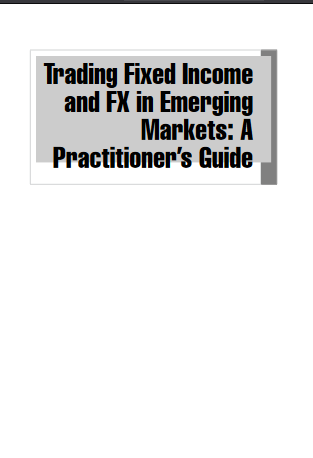Introduction
This book will make you a better portfolio manager and risk-taker. The key to succeeding in markets is twofold. First, a solid methodology is crucial. And second, conviction to press the bets when the stars align may be even more important. The two issues are obviously linked. A solid methodology is, after all, what creates conviction. Such a methodology can come from participating in markets for a long time and internalizing what “works” along the way. The gut feeling of an experienced portfolio manager may be what gives conviction. But there is a shortcut: data can substitute for hands-on experience and is likely superior. After all, backtesting trading rules and analysing what works across many countries, instruments, and time periods is more reliable than just using data subconsciously collected during an individual trading career, which is necessarily more limited in terms of instruments traded and timespans covered. This book does the data analysis for our readers to generate a robust trading methodology for emerging markets. The result is a set of empirically validated rules of thumb that we find helpful to generate alpha. The rules are valuable for benchmarked long-only investment funds as well as for hedge funds. We establish both what works and what does not work (even though many think it does). Often, it is of equal value to understand what does not work, as noise reduction is important to generate conviction. This book will make you a better policy maker. While the book is written from the perspective of making money in markets, some chapters are also relevant for policy mak- ers. In particular, it is very important for policy makers to understand how markets will react to their various measures, whether they are FX interventions, IMF programmes, or interest rate policies. The actions of policy makers generate many of the opportuni- ties for markets. But at the same time, understanding markets creates opportunities for policy makers. This book will make you a better academic and quantitative researcher. This book is not written with an academic mindset. And although writing the book involved a significant amount of coding, we also do not do the work of hardcore quants. We are willing to live with small sample sizes and simplifying assumptions in our backtests. In order to bring the ideas across, we typically assume zero transaction costs, and we don’t worry about risk-management overlays. But the book is about systematic ideas and figuring out how markets work. We trust that academics and quantitative researchers will find many of the ideas interesting and worthy of further study. This book will make academics’ output more relevant to the real worl
چکیده فارسی
مقدمه
این کتاب شما را به مدیر پورتفولیو و ریسک پذیر بهتری تبدیل می کند. کلید موفقیت در بازارها دو چیز است. اول، یک روش شناسی محکم بسیار مهم است. و دوم، اعتقاد به فشار دادن شرطها در زمانی که ستارهها در یک راستا قرار میگیرند ممکن است مهمتر باشد. این دو موضوع آشکارا به هم مرتبط هستند. به هر حال، یک روش شناسی مستحکم چیزی است که باعث ایجاد اعتقاد می شود. چنین روششناسی میتواند ناشی از مشارکت طولانی مدت در بازارها و درونی کردن آنچه در طول مسیر «کار میکند» باشد. احساس درونی یک مدیر پورتفولیوی باتجربه ممکن است چیزی باشد که به شما اطمینان می دهد. اما یک میانبر وجود دارد: داده ها می توانند جایگزین تجربه عملی شوند و احتمالاً برتر هستند. از این گذشته، آزمایش مجدد قوانین معاملات و تجزیه و تحلیل آنچه در بسیاری از کشورها، ابزارها و دورههای زمانی کار میکند، قابل اعتمادتر از استفاده از دادههای ناخودآگاه جمعآوریشده در طول یک حرفه تجاری فردی است، که لزوماً از نظر ابزارهای معامله شده و بازههای زمانی تحت پوشش محدودتر است. این کتاب تجزیه و تحلیل داده ها را برای خوانندگان ما انجام می دهد تا یک روش تجاری قوی برای بازارهای نوظهور ایجاد کند. نتیجه مجموعهای از قوانین تجربی معتبر است که به نظر ما برای تولید آلفا مفید است. قوانین برای صندوقهای سرمایهگذاری طولانی مدت و همچنین برای صندوقهای تامینی ارزشمند هستند. ما هر دو را تعیین می کنیم که چه چیزی کار می کند و چه چیزی کار نمی کند (حتی اگر بسیاری فکر می کنند که کار می کند). اغلب، درک اینکه چه چیزی کار نمی کند ارزش یکسانی دارد، زیرا کاهش نویز برای ایجاد اعتقاد مهم است. این کتاب شما را به سیاست گذار بهتری تبدیل می کند. در حالی که این کتاب از منظر کسب درآمد در بازار نوشته شده است، برخی از فصل ها نیز برای سیاست گذاران مرتبط هستند. به ویژه، برای سیاستگذاران بسیار مهم است که بدانند بازارها به اقدامات مختلف آنها چه واکنشی نشان خواهند داد، چه مداخلات ارزی، برنامه های صندوق بین المللی پول یا سیاست های نرخ بهره. اقدامات سیاستگذاران بسیاری از فرصت ها را برای بازارها ایجاد می کند. اما در عین حال، درک بازارها فرصت هایی را برای سیاست گذاران ایجاد می کند. این کتاب شما را به یک محقق دانشگاهی و کمی بهتر تبدیل می کند. این کتاب با ذهنیت آکادمیک نوشته نشده است. و اگرچه نوشتن کتاب شامل مقدار قابل توجهی از کدنویسی است، ما همچنین کار کوانت های هاردکور را انجام نمی دهیم. ما حاضریم با حجم نمونه کوچک و فرضیات سادهسازی در آزمونهای پسآزمون زندگی کنیم. برای ارائه ایدهها، معمولاً هزینههای تراکنش صفر را در نظر میگیریم و نگران همپوشانیهای مدیریت ریسک نیستیم. اما کتاب در مورد ایده های سیستماتیک و پی بردن به نحوه عملکرد بازارها است. ما اعتماد داریم که دانشگاهیان و محققان کمی بسیاری از ایده ها را جالب و شایسته مطالعه بیشتر خواهند یافت. این کتاب خروجی دانشگاهیان را با دنیای واقعی مرتبط تر می کند
ادامه ...
بستن ...
Author(s): Dirk Willer, Ram Bala Chandran, Kenneth Lam
Series: Wiley Finance
Publisher: Wiley, Year: 2020
ISBN: 9781119598992
ادامه ...
بستن ...










